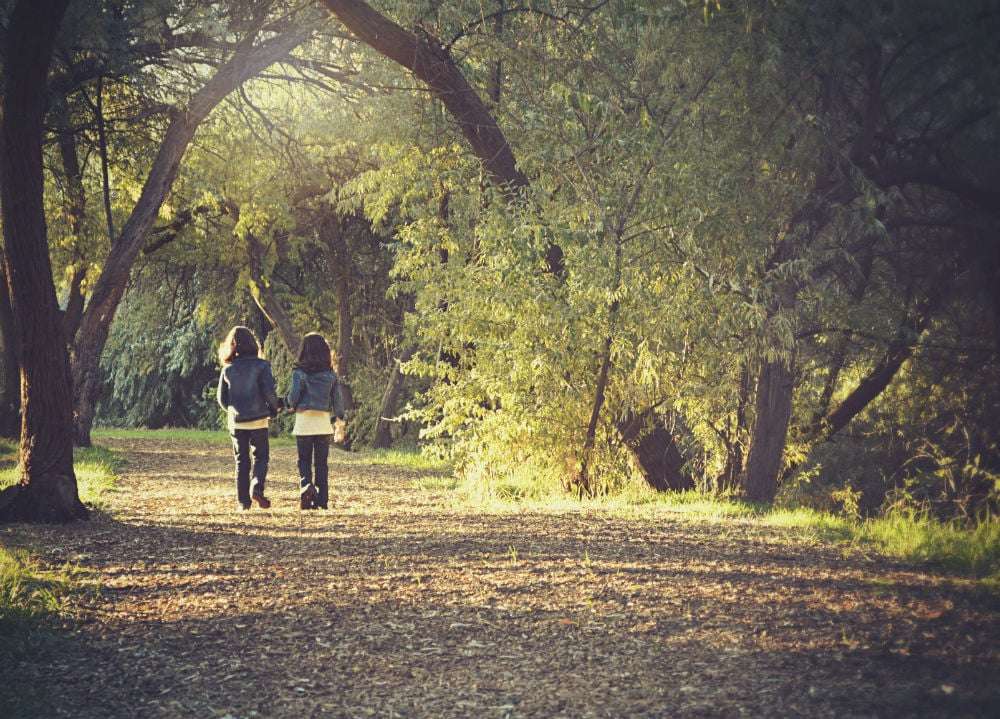There are many challenges that parents must face when it comes to raising a caring, responsible, and socially adept child; not least of which is the task of ensuring they inherit your eco-friendliness, as well as your favorable traits. But how exactly can we ensure our children understand the importance of being green? Here we provide ten tips for helping you do just that.
1. Lead by example
One of the simplest tips to pass down about your love for the planet is to lead by example – children have an uncanny ability to quickly pick up our habits – be they good or bad. Should they see you recycling, growing veg, unplugging your devices that aren’t in use (the list goes on!) then they will begin to see this as normal.
You can help reinforce your everyday actions by having learning sessions on why you do the things you do – you could show your child the lifecycle of water by looking at the rain, inspecting your home water system, and watching an online video together.
2. Get them out of the habit of buy, buy, buy!
This consumerist world of ours is killing the planet – and with only 3.1% of the world’s children living in America but owning a staggering 40% of the toys [UCLA]), it’s never been more important to adopt a responsible approach to your toy purchases.
Show your mini-me that you shouldn’t simply buy new, replace and throw away by having toy swaps with other parents and children. You could also take a trip every once in a while to the charity shop, to demonstrate this is just as worthy a source of toys as those big shiny megastores.
You could also use YouTube to show your child what happens to recycle once it disappears from the curbside.
3. Grow something together
Nurturing plants, growing veg, or planting a tree and watching it grow can help kids in getting to grips with nature. They’ll also be able to appreciate just how hard nature works throughout the seasons to provide those shiny tomatoes, sunflower seeds, or crisp apples.
4. Ditch the plastic
Most mainstream toys are created from all sorts of brightly colored plastics and synthetics – and with more than $18 billion toys purchased in the US every year (The Toy Association), our landfills are blighted by the once bright and cherished.
What’s more, the plastics used to create our kids’ toys aren’t only bad for the planet but are also potentially bad for our children’s health. The reason behind this is that some plastics contain harmful elements such as phthalates and bisphenol-A (which have been linked to everything from infertility to cancerous growths).
You can help your child in understanding the difference between ‘good’ and ‘bad’ toys by showing them the lifecycle of plastics – and explaining just how long such toys take to break down (which could easily be 1000 years+!).
5. Have excellent resources to hand
The number of eco-friendly blogs and green resource websites aimed solely at kids is growing. Should you need to answer a question, such as “How is electrically made?” or explain exactly what climate change is and how global warming is impacting our planet, check out Eco-Friendly Kids. If you want to focus on worldwide wildlife, then WWF is a great place to start.
6. Get back to nature
Nature is the most inspirational resource you have for teaching your child why being green is so important – to make an effort to visit parks, woods, and beaches (if possible) to provide the complete picture as to what makes up this world of ours beyond the end of the urban street. This can also help your child in caring for the environment – after all, if they enjoy the outdoors, they’ll want to look after it.
7. Look after the local wildlife
In even, the most built-up of areas wildlife is all around. Help attract it into your backyard with bird feeders, seeds, cones, nuts, and berries. You can also place a water dish out that could be topped up every time it runs dry.
Get the little ones involved by teaching them about the dietary needs of wildlife and the dangers that they face from things such as roads, changing seasons, and urban predators.
8. Get into the habit of cycling or walking
It can be all too easy to fall into the trap of driving your children to school, to friends’ houses, or to after school clubs. Whilst modern life is more hectic than ever, with less time on our hands than we would like, try to switch one or more car journeys a week by walking or cycling to your destination with your child (with the bonus of getting fit in the process!).
9. Cook up an eco-friendly storm
There are huge problems caused by how the USA shops for groceries – vegetables and fruit shipped from around the world, ‘wonky’ veg immediately rejected by shops, and packaging that is far from all recyclable are just a few of the issues associated with the average shop. Help your child in understanding these issues by shopping for a single meal with a low carbon footprint. Walk to the store, shop for loose veg that has been grown locally, and choose other ingredients that come in recyclable packaging.
10. Turn it off
Help your child in understanding the impact of light or tap left on by illustrating how much energy or water is wasted over the course of a year – you can demonstrate this by showing which toy could be powered, and for how long, and using containers to fill with water.
How do you help your child in appreciating the environment? Do you have any tips that we’ve missed off of our list?
If you have to resist any questions, please contact us!
Last update of the article: 11/19/2020

About the Author
Jen is your go-to guru for crafting a cozy, green cocoon. 🪴 Her dive into sustainable building wasn’t just about saving the planet—it started as a mission to make family movie nights eco-friendly (and to ensure the popcorn was the only thing getting heated!). With a knack for breaking down the jargon, Jen turns eco-lingo into everyday language. Swing by the Green Living blog for a mix of earth-loving advice and home improvement hacks. Whether you’re just dipping your toes into green waters or you’ve been swimming in the deep end of DIY projects, Jen’s here to guide, giggle, and remind you that every eco-choice is a step towards a planet that thanks you… and maybe even sends a rainbow your way! 🌈


